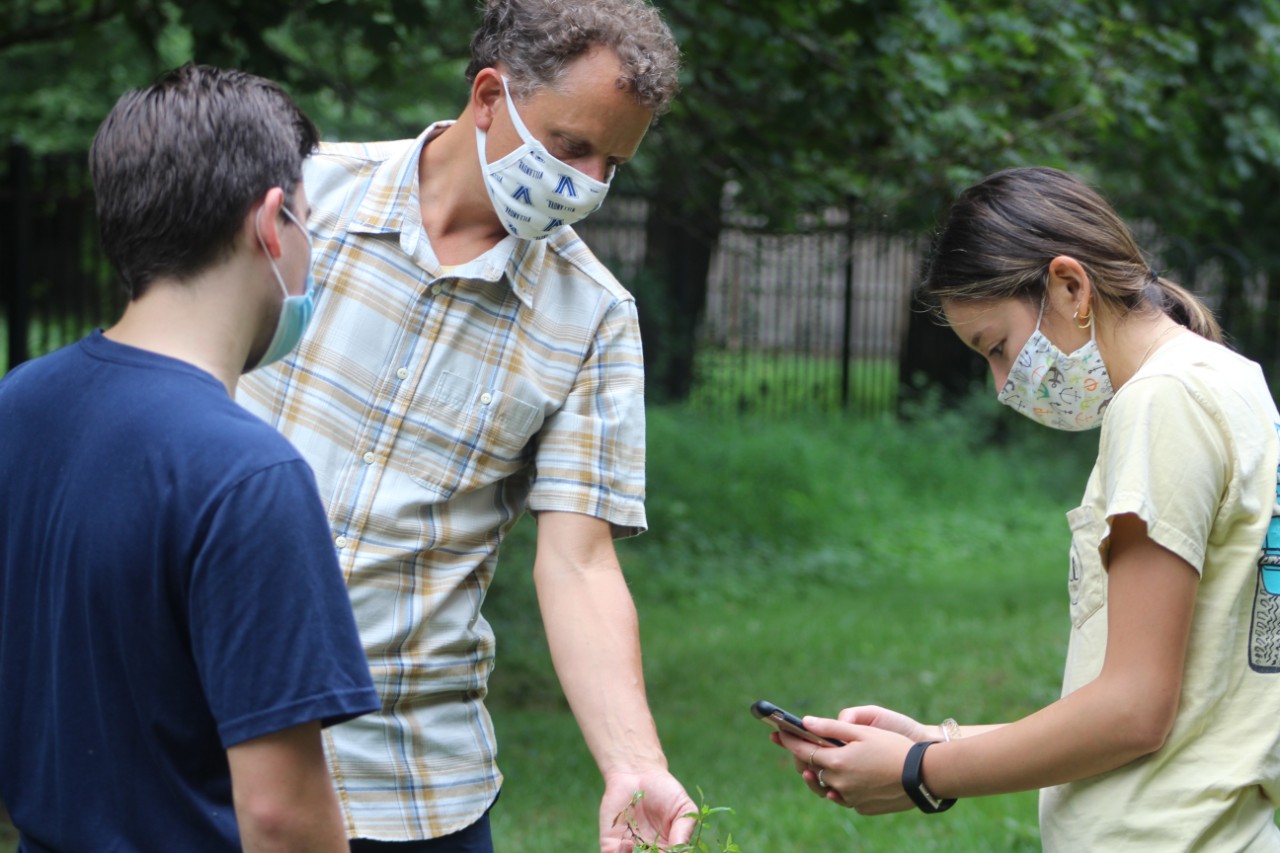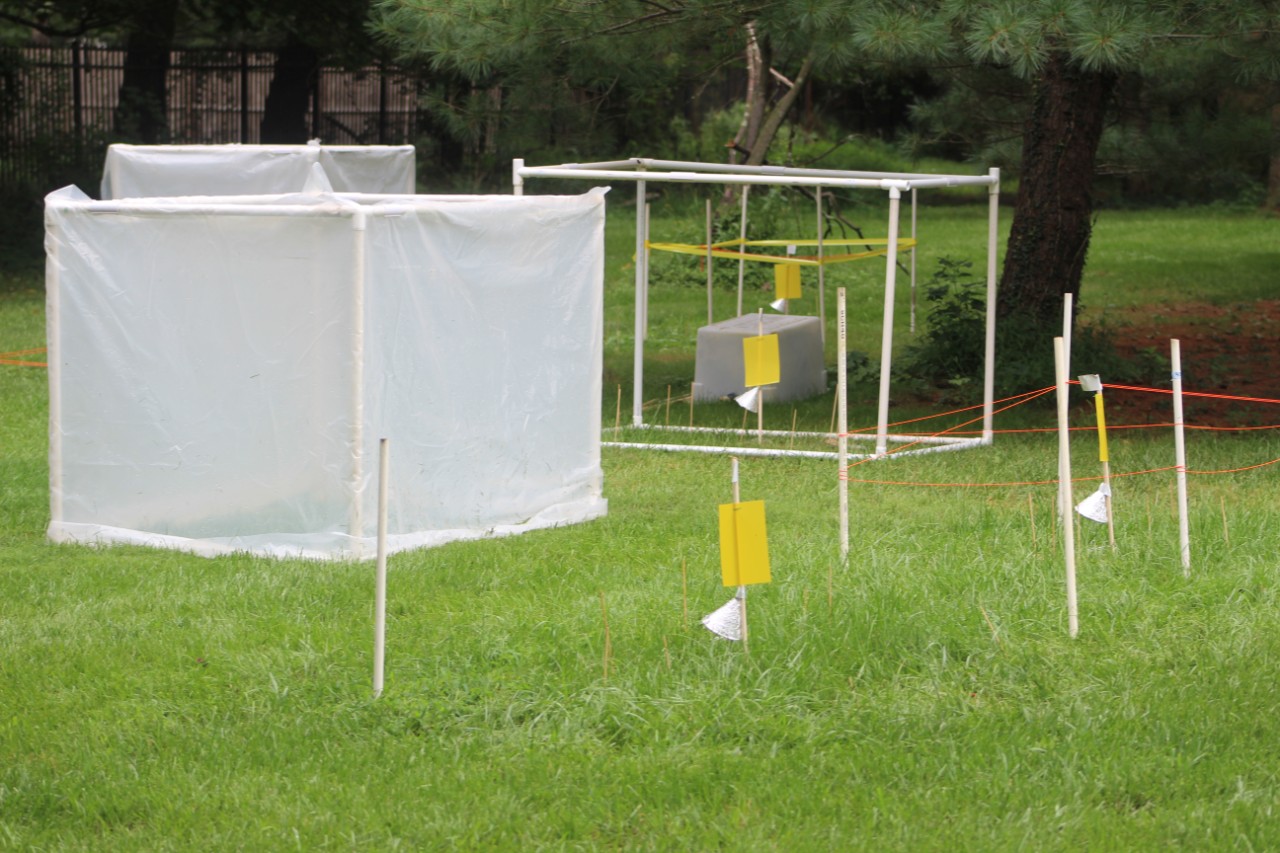Outdoor Biology lab is more than just “watching the grass grow” during a pandemic

While the spread of the novel coronavirus, COVID-19, has meant that many research labs across the country are unable to continue their work, Adam Langley, PhD, ecosystem ecologist and professor of biology at Villanova University is one of the lucky ones. Dr. Langley’s outdoor research experiment, along with his willingness to adapt to the needs of his students, has made his Global Change Ecology class an impactful experience for students— despite the challenges brought about by the pandemic.
As a global change ecologist, Dr. Langley studies “the way everything works together.” “Everything,” in this case, being “the flux of matter and energy through the ecosystem. How carbon and nutrients and even pollutants move through the soil, air and water.”
To learn about how this flow is impacted by climate change, Dr. Langley’s class set up chambers made from PVC piping and transparent film to simulate the warming that is expected for this area in the coming decades. The students are monitoring plant growth and community structure, insect movement, decomposition, soil respiration and physical parameters like air temperature and soil moisture inside the warmed chambers and unwarmed control plots, housed on the lawn near Villanova’s Dundale Hall.
“When we start out the semester, the plots are not very species rich,” Dr. Langley shared. “Over time, more diversity creeps in.”
Langley described burying cups in the soil to catch insects that cross the plot, and how the students take grass clippings and photos either weekly or bi-weekly to be examined and tracked. The experiment highlights the impact of pollutants common to the Northeastern U.S on our environment. The students added nitrogen to half of each plots to simulate the nutrient pollution impacting area ecosystems, simulating what local farmers use to treat their crops. Interestingly, this nutrient pollution causes the plants in the enclosure to thrive but reduces the amount of different species present.
“These pollutants can come from people feeding their lawns, and extra nitrogen nutrients are released when you burn fossil fuels.” Dr. Langley added, “They come right back down to the soil.” Examining these plots help students like Daniela Barrios, ’21 predict how human land use and elevated levels of CO2 in our atmosphere will lessen the different types plants we see around us.
“I am truly enjoying taking Global Change Ecology, especially in light of all of the controversy surrounding climate change currently. It is intriguing to learn about the science behind global warming and to actually see evidence of what is happening around the world,” said Barrios, a biology major with a psychology minor.
Dr. Langley has been running this experiment for many years, but with the outbreak of the coronavirus pandemic it has meant even more—allowing students to spend time outdoors, while also social distancing. Now, in addition to visiting their plots in small groups at staggered times, the class also meets outdoors for lectures, if the weather permits. Daniela Barrios added that she “cannot imagine being stuck inside a classroom lab where you have to interact closely with others. While outdoors, I am still able to work with my lab group, my classmates, and my professor while maintaining safe social distancing procedures.”
Most of Langley’s student have returned to campus for the semester, save for one student whose choice to do remote learning made him the de facto data manager. “Data manager is not a position I’ve had before,” says Dr. Langley. “It’s great having one person who collects and checks all the data, makes sure it ends up in the right spot.” The position of “data manager” is one that Dr. Langley is likely to stick with in future iterations of the lab.
Other than that, he points out that “the nuts and bolts of the experiment aren’t that different from previous years, but this year we’re pouring more effort into it. I think all the faculty are doing that.”
“Lab work is tough right now, so I feel really lucky to have this group of students and to be able to keep up the important work of studying our impact on our environment."

